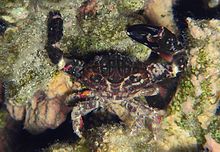
Xanthidae is a family of crabs known as gorilla crabs, mud crabs, pebble crabs or rubble crabs. Xanthid crabs are often brightly coloured and are highly poisonous, containing toxins which are not destroyed by cooking and for which no antidote is known. The toxins are similar to the tetrodotoxin and saxitoxin produced by puffer fish, and may be produced by bacteria in the genus Vibrio living in symbiosis with the crabs, mostly V. alginolyticus and V. parahaemolyticus.

Tuerkayana hirtipes is a species of terrestrial crab.

Percnon is a genus of crabs in the family Percnidae. It has also been included in the family Plagusiidae as subfamily Percninae.

The Plagusiidae are a family of crabs, formerly treated as a subfamily of the family Grapsidae, but have since been considered sufficiently distinct to be a family in their own right. The family Plagusiidae includes the subfamily Plagusiinae, comprising the genera Percnon and Plagusia, which constitute a widespread group of litophilic, intertidal and subtidal crabs that are notorious for their speed and their agility.
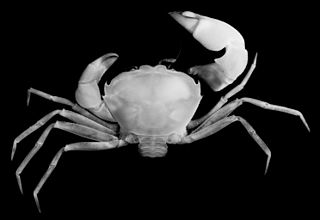
Pseudozioidea is a superfamily of crabs, formerly treated in the Eriphioidea, Carpilioidea, Xanthoidea, Pilumnoidea and Goneplacoidea. A number of fossils from the Eocene onwards are known from the family Pseudoziidae. Eleven genera are recognised in three families:

Etisus is a genus of crabs, containing the following extant species:

Epialtidae is a family of crabs, containing the subfamilies:

Geograpsus is a genus of crabs in the family Grapsidae, containing four extant species, and one extinct species:
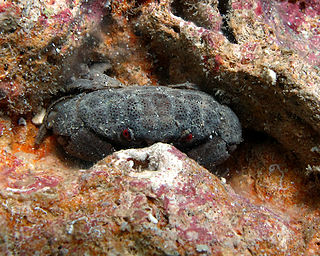
Actaeodes is a genus of crabs in the family Xanthidae, containing the following species:

Chlorodiella is a genus of crabs in the family Xanthidae, containing the following species:
Liocarpilodes is a genus of crabs in the family Xanthidae, containing the following species:

Pilodius is a genus of crabs in the family Xanthidae, containing the following species:

Euxanthus is a genus of crabs in the family Xanthidae containing the following species:

Medaeus is a genus of crabs in the family Xanthidae, containing the following species:
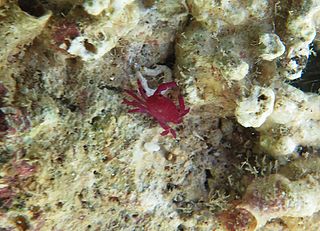
Liomera is a genus of crabs in the family Xanthidae. It contains the following species:

Paraxanthias is a genus of crabs in the family Xanthidae, containing one exclusively fossil species and the following extant species:

Xanthias is a genus of crabs in the family Xanthidae, containing two exclusively fossil species and the following extant species:
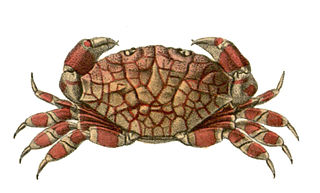
Lophozozymus is a genus of crabs in the family Xanthidae, containing the following species:

Zosimus is a genus of crabs in the family Xanthidae, containing the following species:
Zozymodes is a genus of crabs in the family Xanthidae, and was first described in 1861 by Camill Heller.
